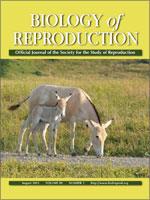The components of the extracellular signal-regulated kinase (ERK) pathway are involved in the regulation of epididymal cellular processes. Interestingly, our previous studies showed that there are two different activity levels of the ERK pathway components in the epididymal epithelium: a basal level in most regions and a higher level in the differentiated initial segment (IS). In this study we analyzed the role of fibroblast growth factor receptor substrate 2 (FRS2) in the regulation of these two levels. Two mouse models were generated. In the first model, Frs2 was deleted from epithelial cells of most epididymal regions except for the IS from the embryonic period onward. Loss of Frs2 dampened the basal activity level of the ERK pathway components, which resulted in an increase in apoptosis along the epididymal duct. This was observed during the period when FRS2 expression level was highest in wild-type epididymides. In the second model, Frs2 was deleted from the proximal epididymal epithelium from Postnatal Day 17 onward. Most of the epididymides in this model exhibited normal morphology. Loss of Frs2 in these epididymides did not affect the high activity level of the ERK pathway components in the IS. However, a subgroup of epididymides in the second model showed increased apoptosis which resulted in an abnormally shaped proximal region or development of granulomas. Therefore, data from these two models showed that FRS2 played different roles in the regulation of two activity levels of the ERK pathway components in the epididymis.
How to translate text using browser tools
19 June 2013
The Role of Fibroblast Growth Factor Receptor Substrate 2 (FRS2) in the Regulation of Two Activity Levels of the Components of the Extracellular Signal-Regulated Kinase (ERK) Pathway in the Mouse Epididymis
Bingfang Xu,
Ling Yang,
Barry T. Hinton
ACCESS THE FULL ARTICLE

Biology of Reproduction
Vol. 89 • No. 2
August 2013
Vol. 89 • No. 2
August 2013
Apoptosis
epididymal development
ERK pathway
FRS2
knockout model
transgenic




